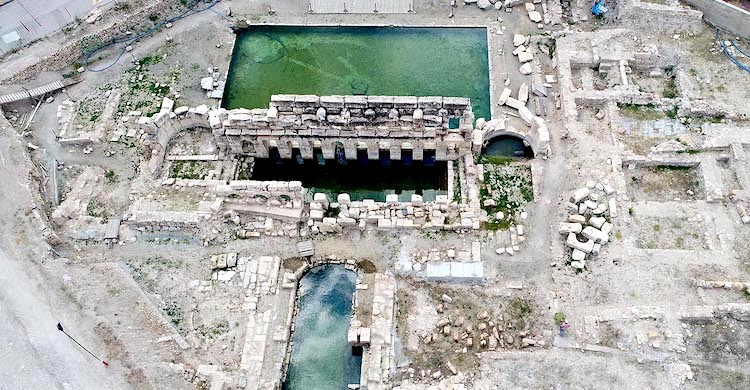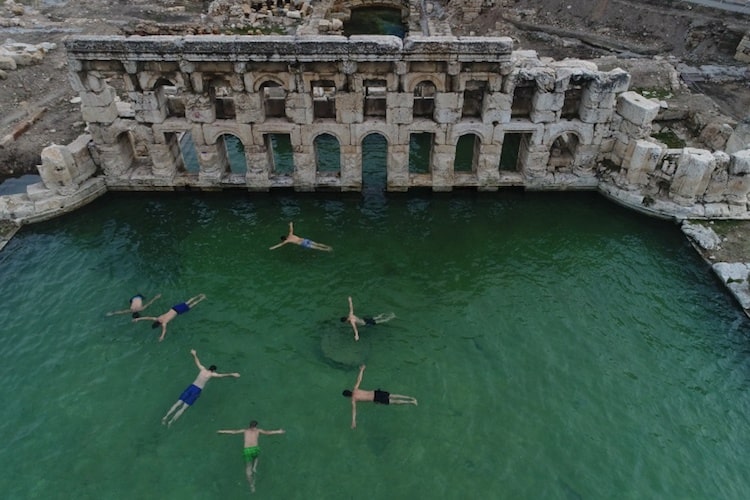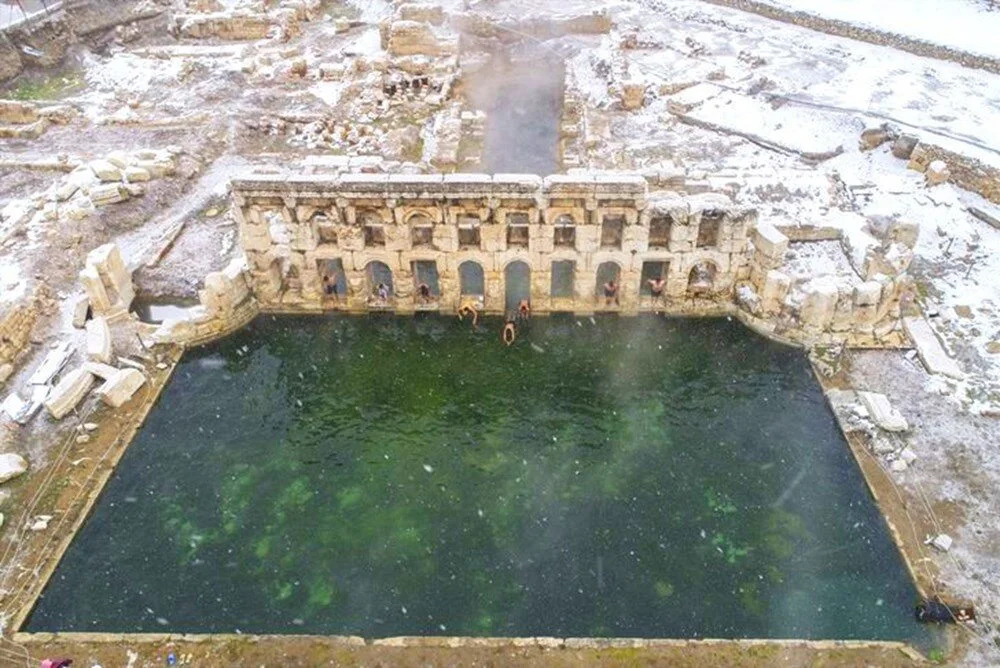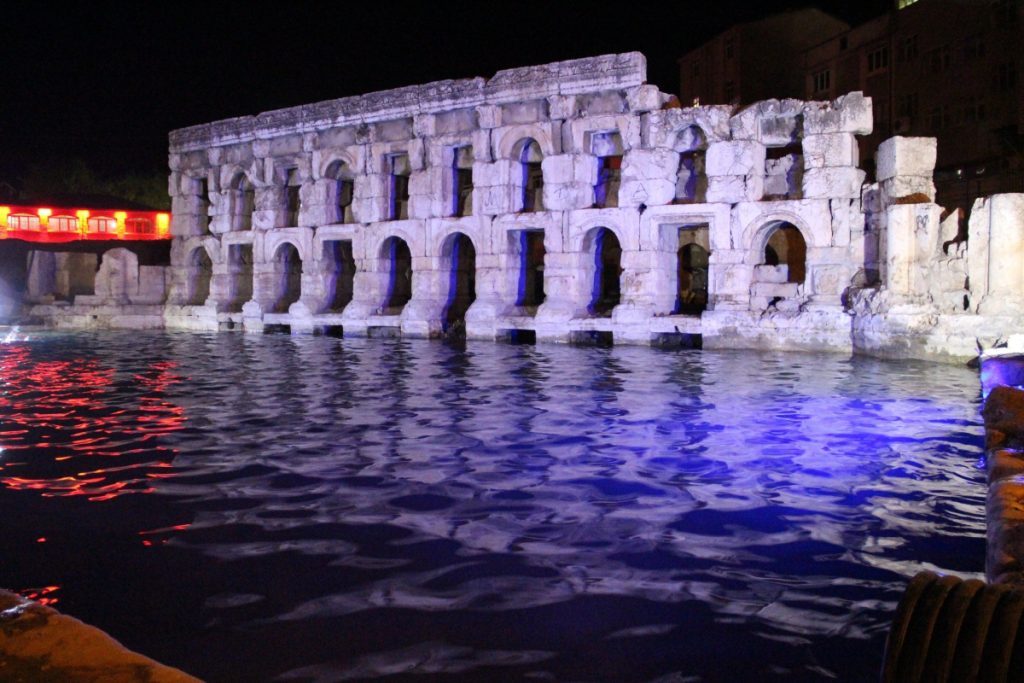
Perhaps the oldest thermal treatment center in the world, which has been in continuous use for 2000 years -Basilica Therma Roman Bath or King’s Daughter-
The ancient Roman bath of the Basilica of the Thermae, known as the “King’s Daughter” (Turkish: Kral Kızı Hamamı or Sarıkaya Roma Hamamı) is an ancient Roman spa town located in the Yozgat province of central Turkey.
The bath was built in the 2nd century and used in the Byzantine, Selcuk, and Ottoman periods and is still open to the public in modern Turkey.
This historic gem, inscribed on UNESCO’s Temporary World Heritage List in 2018, has been undergoing a transformative restoration effort to highlight its remarkable architecture, rich history, and the therapeutic thermal water flowing at a soothing 50 degrees Celsius (122 degrees Fahrenheit).
The Roman Bath, which was unearthed after the excavations carried out in 2014 by the Yozgat Governorship Provincial Culture and Tourism Directorate and Sarıkaya Municipality, draws attention to its interesting architecture, history, and water that has been produced for two thousand years.
This Roman Bath that was built in the 2nd century A.D. has been used continuously and this gorgeous fountain still continues to be a source of healing with thermal waters.

Due to this nearby thermal spring, the town on the route from Tavium to Caesarea during the Roman era was known as Aquae Sarvenae. A church was later added to the bath’s northern portion as Christianity spread throughout the area. As a result, the town’s name was changed to Basilica Therma. Basilica Therma served as a bishopric center up until 451 AD. The center of the town was a Roman bath and the town was surrounded by a wall about three kilometers long.
The facade and pools of the Roman Baths were made of marble, while the inner walls were made of limestone. Today, the main parts of the structure can be seen: a western facade, a large thermal pool in front of it, an inner pool behind the facade, and a third pool to the east. On the northern and southern sides of the 30-meter-long facade, two small semi-circle pools are planned. Behind the façade is an inner pool surrounded on both sides by stairs and arches that connect directly to the large pool in front.

According to historians, a terminally ill daughter of a Roman emperor who once lived in Kayseri province was healed at the Roman bath in Yozgat’s Sarıkaya district.
The Roman King’s Daughter Bath is told among the people as follows:
A Kayseri-based Roman king’s daughter becomes ill with an untreatable illness. The king makes every effort to treat his daughter, taking her to numerous medical professionals. But this girl, whose beauty is legendary, has no cure. The girl’s illness is getting worse every day, and she can no longer walk. Rheumatism is the girl’s current illness. Sarıkaya was a swamp and reeds back then. Where the hot water was, a small pond formed; this is a muddy bath in the form of slime. The king sends his little girl to visit the place where this hot water is found as a last resort.

The poor girl, who is now in her final days, wanders around this muddy pond to be consoled and occasionally goes into the mud with her friends. Here, the mud and hot water she enters for walking and consolation is good for the girl. She begins to walk slowly. It turns out that the beautiful girl, who finally recovered completely, is better than the hot water here. Thereupon, the girl’s father, the king, had a marble pool built here, surrounded by large cut stones, and a city was formed around this pool, where there was no one before.
The name of the king’s daughter is given to this new city. The name of this city with a population of seventy thousand is “Öper” or “Hoperi”. This great city was destroyed by an earthquake, and only the baths remained.
You may also like
- A 1700-year-old statue of Pan unearthed during the excavations at Polyeuktos in İstanbul
- The granary was found in the ancient city of Sebaste, founded by the first Roman emperor Augustus
- Donalar Kale Kapı Rock Tomb or Donalar Rock Tomb
- Theater emerges as works continue in ancient city of Perinthos
- Urartian King Argishti’s bronze shield revealed the name of an unknown country
- The religious center of Lycia, the ancient city of Letoon
- Who were the Luwians?
- A new study brings a fresh perspective on the Anatolian origin of the Indo-European languages
- Perhaps the oldest thermal treatment center in the world, which has been in continuous use for 2000 years -Basilica Therma Roman Bath or King’s Daughter-
- The largest synagogue of the ancient world, located in the ancient city of Sardis, is being restored











Leave a Reply